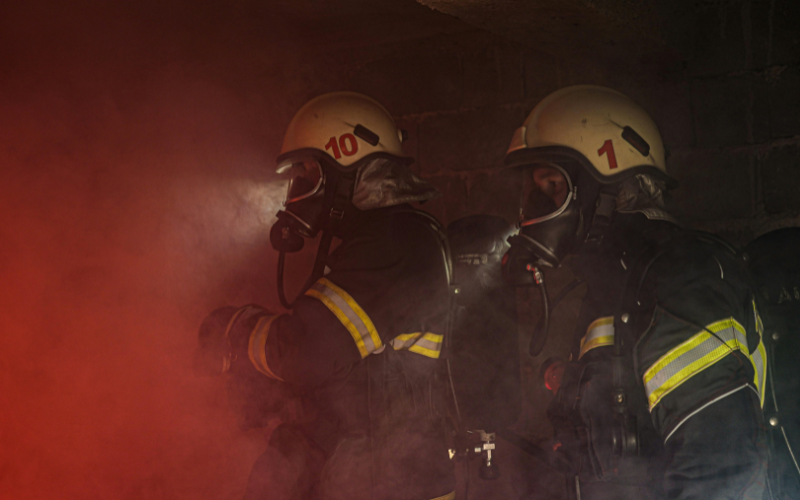For decades, firefighters bravely battled blazes with Aqueous Film Forming Foam (AFFF), a seemingly innocuous firefighting agent. Now, a sobering truth has emerged that AFFF contains harmful per- and poly-fluoroalkyl substances (PFAS) linked to severe health issues, including various cancers. This revelation has ignited a wave of lawsuits as firefighters seek accountability from manufacturers and crucial support for their health struggles.
In this article, we explore the evolving landscape of AFFF lawsuits, addressing retribution and securing resources for firefighters amid health crises.
Understanding AFFF Contamination and Health Risks
AFFF, once vital against flammable liquid fires, now taints firefighting with health hazards and environmental worries, leaving an indelible mark. AFFF contains PFAS, persistent chemicals known for their ability to repel oil and water, making them effective firefighting agents. However, PFAS’s resilience in firefighting makes them enduring pollutants, infiltrating soil, waterways, and human bodies persistently and alarmingly.
According to the American Cancer Society, studies have examined significant cancer rates among individuals residing near or employed in PFAS-related chemical plants. Some studies indicate heightened risks of testicular and kidney cancers with increased PFAS exposure. Also, research suggests potential associations with thyroid cancer. Besides, other studies propose plausible connections to prostate, bladder, breast, and ovarian cancers.
While the research is ongoing, the growing body of evidence underscores the potential health risks associated with AFFF contamination.
Legal Landscape of AFFF Lawsuits
The IARC, a division of the WHO, assessed the carcinogenic potential of PFOA and PFOS within the PFAS family. After a thorough literature review, the Working Group deemed PFOA carcinogenic to humans (Group 1). PFOS was classified as possibly carcinogenic (Group 2B), revealing health risks.
This assessment, along with the studies mentioned above, spurred a wave of legal action. Individuals affected by cancer and other health issues due to AFFF exposure are initiating AFFF lawsuits to seek justice. Firefighters exposed to AFFF seek compensation from firefighting foam manufacturers for medical expenses, lost income, and pain and suffering.
In the AFFF lawsuit, plaintiffs claim manufacturers knew or should’ve known about PFAS health risks. They allege insufficient warnings and research. Chemical giants such as Chemours, DuPont, 3M, Tyco Fire Products, and others are defendants in these lawsuits.
TruLaw indicates the existence of a multidistrict litigation (MDL) representing individuals exposed to firefighting foam, either at work or through contaminated water consumption. AFFF MDL 2873 centralizes cases in the US District Court: District of South Carolina, offering a single venue for AFFF-related issues. This legal consolidation streamlines proceedings and ensures comprehensive adjudication of claims.
Providing Legal Support for Health Claims
Legal support is crucial for firefighters facing health claims due to PFAS exposure in AFFF lawsuits. It empowers them to navigate the legal complexities, ensuring their voices are heard and their rights upheld for justice. Legal advocacy becomes a lifeline in their pursuit of restitution.
Law firms specializing in environmental and toxic tort litigation are staunch allies for firefighters affected by AFFF-related health issues. They leverage expertise to champion firefighters’ cause, from investigations to courtroom representation nationwide. These legal advocates play a crucial role in navigating the complexities of AFFF contamination cases.
The National Fire Protection Association (NFPA) highlighted NIOSH statistics revealing concerning trends among firefighters. NIOSH statistics reveal firefighters face a 9% higher risk of cancer diagnosis and a 14% higher risk of cancer-related mortality. These figures underscore the urgent need for comprehensive support and intervention within firefighter communities.
Addressing Health Needs and Challenges
Addressing the health needs of firefighters affected by AFFF contamination is imperative beyond legal battles. PFAS exposure’s toll extends beyond litigation, necessitating comprehensive support. Firefighters’ lives are deeply affected, emphasizing the urgency of intervention.
Fire departments and advocacy groups offer medical screenings, wellness programs, and mental health support to firefighters. These initiatives aim to alleviate physical and psychological burdens while promoting awareness and proactive health management. The efforts reflect a commitment to firefighter well-being and community resilience.
Psychiatric Times highlights that over 50% of firefighter deaths result from stress and extreme exhaustion. Another study indicates significantly elevated levels of posttraumatic stress and suicidality among firefighters, particularly career firefighters with higher rates of PTSD.
These findings underscore the mental health challenges faced by firefighters and the urgent need for comprehensive support measures.
Raising Awareness and Advocacy Efforts
As AFFF lawsuits surge, a wave of awareness and advocacy rises, amplifying firefighter and community voices affected by PFAS contamination. Grassroots campaigns and legislative initiatives aim to spotlight AFFF’s health risks and mobilize support for systemic change. These efforts signify a collective push for accountability and protection from the hazards of PFAS exposure.
Firefighter unions, environmental organizations, and public health advocates lead educational outreach efforts on PFAS exposure. Legislative bodies at all levels consider measures to regulate PFAS, improve monitoring, and expand healthcare access. These actions address the urgent need for comprehensive responses to PFAS contamination.
These advocacy efforts catalyze transformative change, empowering firefighters and communities to confront and resolve AFFF contamination challenges with resilience.
Impact on Firefighter Communities
Firefighter unions, environmental organizations, and public health advocates lead educational outreach efforts on PFAS exposure. Legislative bodies at all levels consider measures to regulate PFAS, improve monitoring, and expand healthcare access. These actions address the urgent need for comprehensive responses to PFAS contamination.
As firefighters face the fallout of AFFF contamination, their community bonds are tested but fortified. United by shared experiences and resilience, firefighter communities advocate and support each other, ensuring the well-being of current and future generations. They remain determined to confront the perils of AFFF contamination head-on.
Upholding the Sentinel’s Shield
In AFFF litigation, firefighters transcend mere plaintiffs to become champions of justice and stewards of solidarity. Their journey from litigation to support epitomizes resilience, advocacy, and communal fortitude amid adversity.
AFFF lawsuits extend beyond legal battles, igniting hope and driving change within firefighter communities globally. Litigation amplifies firefighters’ voices, urging recognition, compensation, and systemic reform to combat PFAS contamination’s impact. These legal endeavors signify a collective push for accountability and safeguarding firefighter well-being.
As litigation subsides, support becomes more prominent, guiding toward healing, resilience, and justice for all. Despite adversity, the sentinel’s shield stands firm, a testament to those safeguarding our collective well-being. Their resolve underscores the value of safety, security, and shared humanity.




